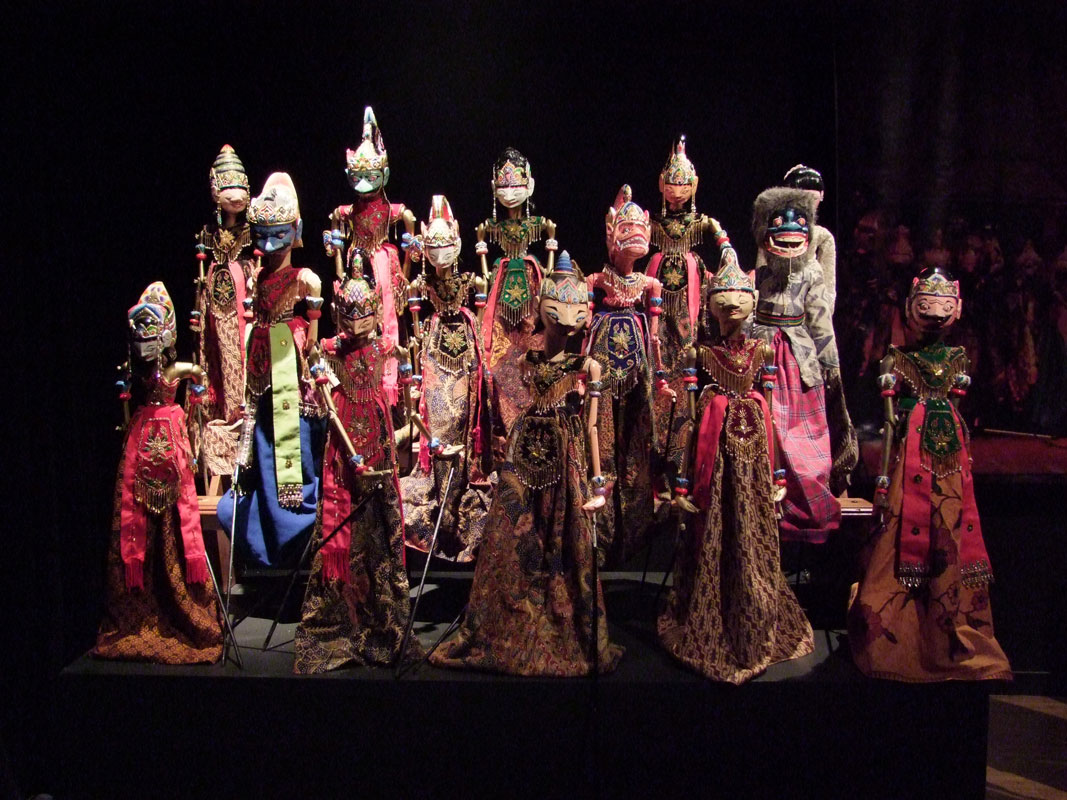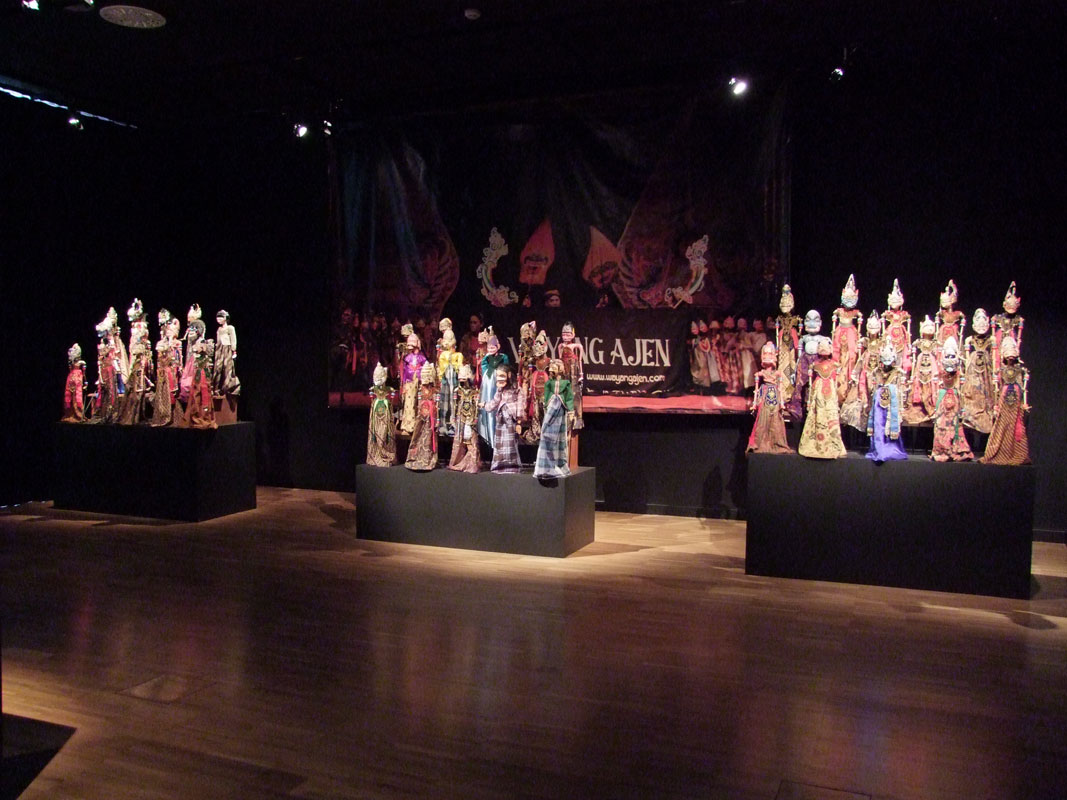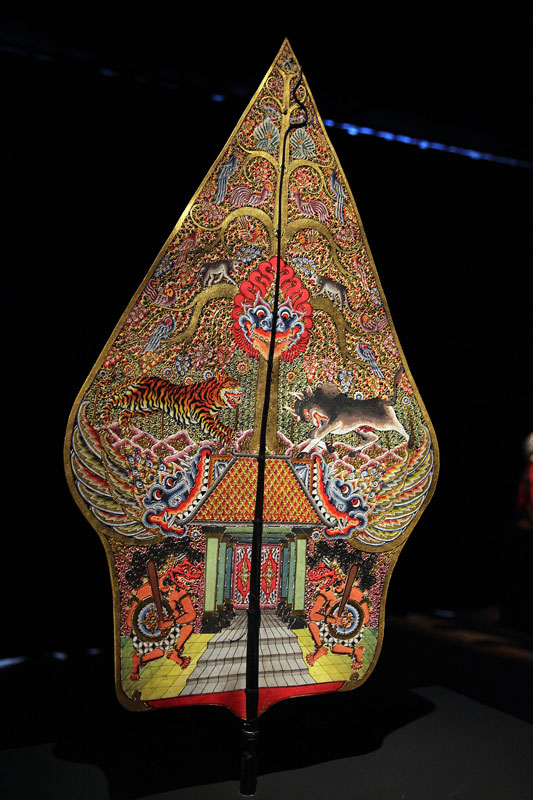
The exhibit, under the title “Indonesia, Wayam Golek”, featured ninety-one Indonesian puppets, all of them stick-puppets except for a single shadow-puppet. They all belong to TOPIC’s private collection.
Each of the figures represents a character from several epic and religious poems, as well as other Indonesian traditions, due to which their characterisation is individualised and thoroughly carried out. they are astonishing in their shape, colour and every single detail of adornment and physical appearance, which give them a particular meaning. Visitors had the opportunity to look at extremely beautiful and precious marionettes.
Each of the figures represents a character from several epic and religious poems, as well as other Indonesian traditions, due to which their characterisation is individualised and thoroughly carried out. they are astonishing in their shape, colour and every single detail of adornment and physical appearance, which give them a particular meaning. Visitors had the opportunity to look at extremely beautiful and precious marionettes.
Wayang is the traditional theatre performed in Bali, Java, the Sunda Islands and other Indonesian and Malaysian regions of Javanese influence. It is believed that the term originally meant ‘shadow’, and it would thus make reference to shadow puppetry. In the year 2008, UNESCO declared it Oral and Intangible Heritage of Humanity and it became a distinguishing mark of Indonesia, with each region contributing with a particular variety.
Most of the puppets in the Wayang Golek are stick-puppets and are handled by means of a central axis that joins head and body and a stick on each arm. Characters are distinguished by their face and the headdress they wear, and we can find the likes of gods (dewa/batara), noble people (satria), monkeys (wanara), giants (raksasa) or demons (buta). Although they are different, they also showcase common features when it comes to their make-up, headdresses and clothing.
Most of the puppets in the Wayang Golek are stick-puppets and are handled by means of a central axis that joins head and body and a stick on each arm. Characters are distinguished by their face and the headdress they wear, and we can find the likes of gods (dewa/batara), noble people (satria), monkeys (wanara), giants (raksasa) or demons (buta). Although they are different, they also showcase common features when it comes to their make-up, headdresses and clothing.
Museum’s opening hours
From Tuesday to Friday
From 10:00 to 13:00 // From 16:00 to 19:00
Weekends and holidays
From 10:30 to 14:00 // From 16:00 to 19:30
Mondays: Closed
The museum will be closed on January 1 and 6, on January 5 in the afternoon; in Carnival from the 27th to the 5th, on June 24 for the San Juan festivities and on December 25. On December 24 and 31 in the afternoon.
Access to the theater will be closed 15 minutes after the start of the performance.

Tolosa Puppet
International Center
Euskal Herria Plaza
20400 Tolosa
Gipuzkoa









